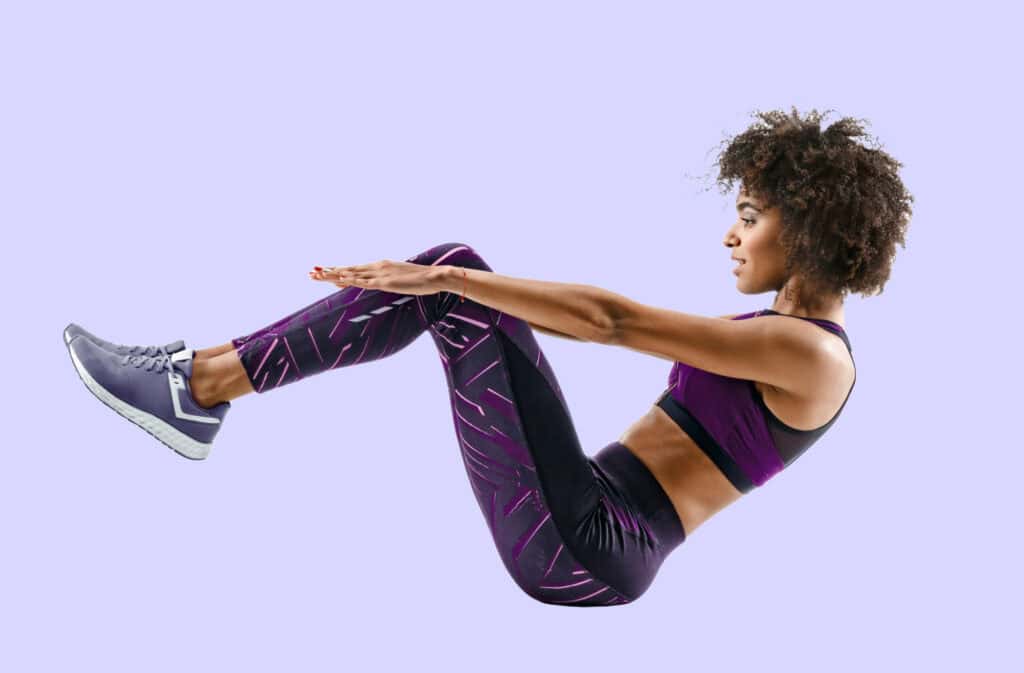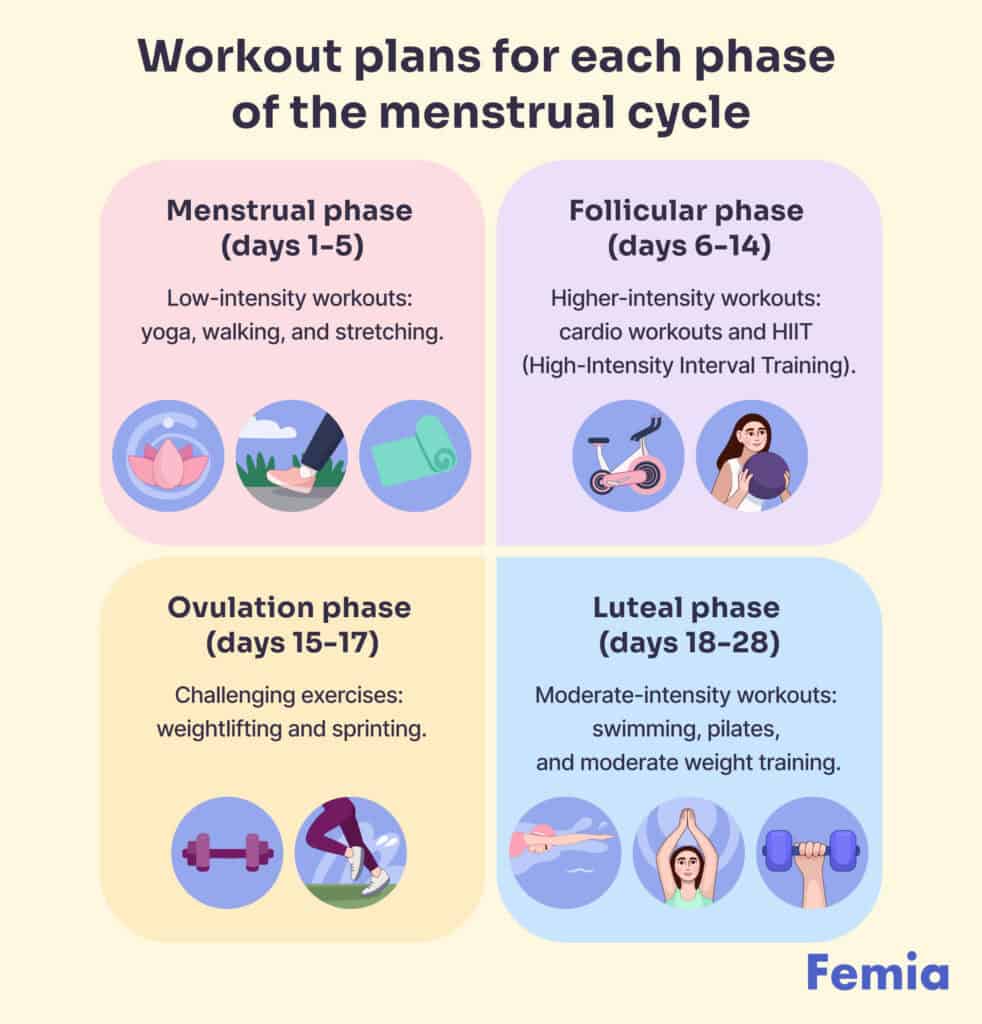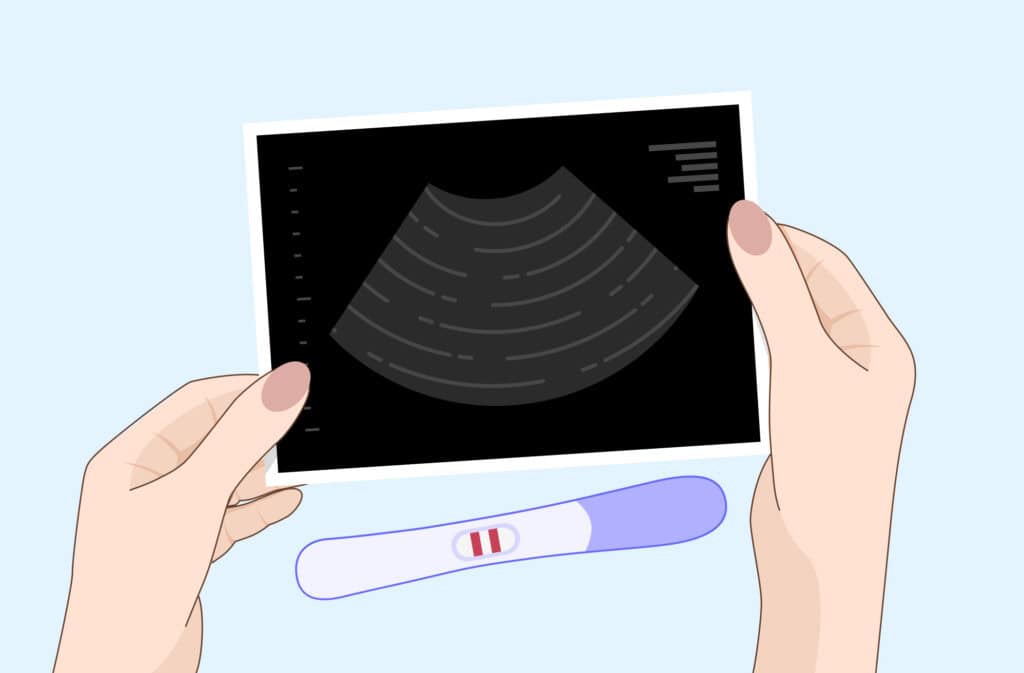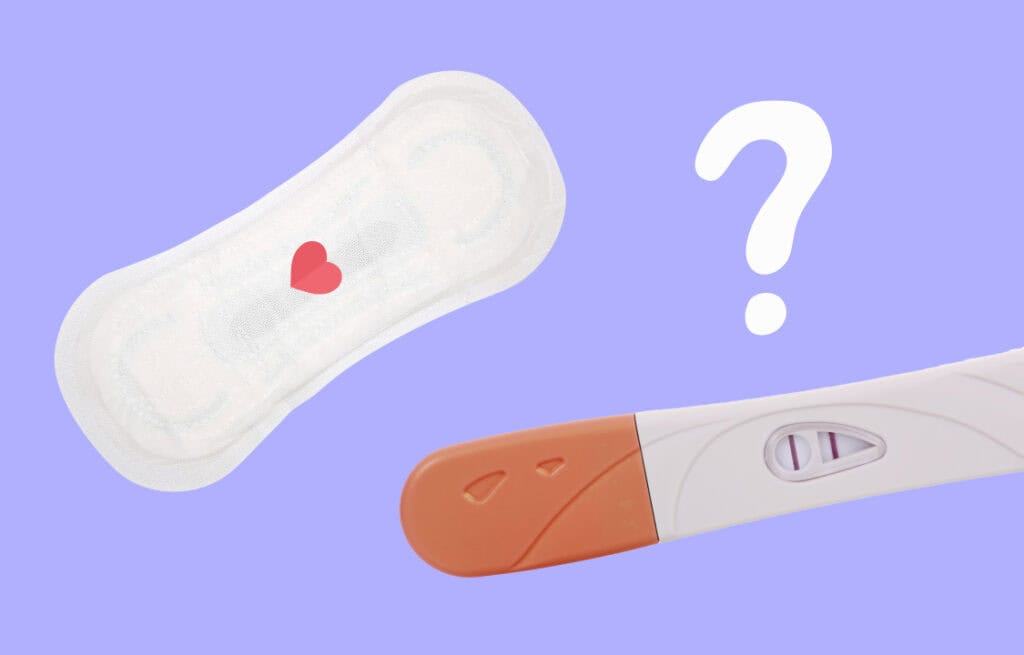Femia > Health Library > Your cycle > Health > Cycle syncing workouts: Exercise according to your menstrual cycle
Cycle syncing workouts: Exercise according to your menstrual cycle

- Updated Feb 11, 2025
- Published
CRAFTED BY HUMAN
Crafted by human At Femia, we provide accurate and up-to-date information at every stage of your journey, from trying to conceive, pregnancy and postnatal support. All content is created by a real person based on in-depth research and own professional experience. Femia ensures that you will receive expert advice, strict accuracy and a personalized approach from our authors/medical experts. Learn more about our editorial policy.
FACT CHECKED
Fact checked At Femia Health, we maintain the highest standards of editorial excellence in delivering content focused on helping you conceive, guiding you through pregnancy, and supporting you postpartum. Explore our content review principles to learn how we ensure the accuracy and quality of our health and lifestyle tips for every stage of your journey.
- Match your workouts to your menstrual cycle: gentle during your period, intense mid-cycle, and moderate before your next period.
- The four phases (menstrual, follicular, ovulation, luteal) have varying hormone levels that affect energy and strength.
One day, you smash your personal best without even trying, and a week later, you barely have the energy to tie the laces of your running shoes. Did you know your menstrual cycle could be to blame for your changing energy levels throughout the month?
Cycle syncing workouts can help you optimize your workouts. The hormonal changes in your cycle cause fluctuations in your energy, strength, and even how long it takes you to recover after a workout. Instead of trying (and failing) to push through fatigue or doing a gentle workout when you have the energy for more, a menstrual cycle workout plan considers your natural energy boosts and lulls throughout your cycle.
Femia helps millions of women align their routines with their cycles
Understanding cycle syncing and exercise
Before we get into the details of cycle syncing, we must learn about the menstrual cycle’s different phases. The menstrual cycle has four distinct phases:
- Menstrual phase (Days 1 to 6).
- Follicular phase (Days 7 to 12).
- Ovulation phase(Days 13 to 15).
- Luteal phase(Days 16 to 28).
The science is still out on the usefulness of cycle syncing exercise, with little solid scientific evidence to back up the practice. However, many female athletes swear by it. The internationally renowned US Women’s National Football Team tracks the cycles of their players and tailors training accordingly, allowing them to get the best out of their players.
What are the benefits of cycle syncing workouts?
The primary benefit of cycle syncing is that it can enhance workout results. By aligning your exercise routine with your menstrual cycle, you can optimize your performance and overall well-being.
Key benefits of cycle syncing workouts:
Improved workout results:
By exercising during phases when your body can handle high intensity, you’re likely to achieve better results compared to pushing through fatigue.Enhanced energy management:
Syncing workouts with your energy levels allows you to take advantage of natural peaks, improving overall performance.Tailored exercise regimens:
Adjusting the intensity of your workouts to match your cycle phases can help maximize benefits. For instance, high-intensity workouts during ovulation and gentler exercises during the luteal phase.Increased enjoyment of workouts:
Timing lighter exercises for low-energy phases can make workouts more enjoyable, preventing burnout and keeping motivation high.Greater awareness of body signals:
Listening to your body and adapting your routine encourages mindfulness, which can lead to improved mental and emotional health.Support for hormonal balance:
Cycle syncing can help mitigate symptoms of PMS and other hormonal fluctuations, leading to a more balanced mood and overall well-being.Community and support:
Engaging with others who practice cycle syncing can foster a supportive community, sharing experiences and tips for managing workouts effectively.
By timing your exercise with your body’s natural rhythms, you’re more likely to enjoy improved performance and a better overall fitness experience. Many women, including professional female athletes, have found substantial benefits from syncing their workouts to their menstrual cycles.
👉Find out more: Cycle syncing diet: What to eat during each phase of your menstrual cycle
Workout plans for each phase of the menstrual cycle

Menstrual phase activity (Days 1-5): Focus on restorative movement
During the menstrual phase, it’s important to prioritize restorative movements that align with your body’s needs. Hormonal fluctuations can lead to fatigue and discomfort, so gentle exercises can help alleviate symptoms and promote relaxation. Here are some types of workouts that are beneficial during this phase:
Yoga:
Practicing gentle yoga poses can help alleviate menstrual cramps, improve circulation, and promote relaxation. Poses that gently stretch the lower back, hips, and pelvic area, such as:- Child’s pose: Relieves lower back tension.
- Reclining bound angle pose: Opens the hips and promotes relaxation.
- Supine spinal twist: Gently stretches the spine and helps release tension.
Pilates:
Pilates focuses on core strength, stability, and body awareness. Engaging in Pilates workouts during the menstrual phase can help improve posture and alleviate lower back pain. Effective exercises include:- The hundred: Activates the core and promotes blood flow.
- Pelvic curl: Gently stretches the spine and strengthens the glutes.
- Side-lying leg lifts: Improves hip stability and core engagement.
Walking or light cardio:
Engaging in low-intensity cardiovascular exercises like walking, light jogging, or cycling can help boost blood circulation and release endorphins, improving mood and reducing menstrual discomfort. Aim for a moderate pace that feels comfortable for you.Stretching and relaxation:
Incorporating stretching exercises and relaxation techniques can help reduce stress and relieve muscle tension associated with menstrual symptoms. Consider:- Deep breathing exercises: Enhances relaxation and reduces stress levels.
- Meditation or mindfulness: Promotes mental clarity and emotional balance.
- Guided imagery: Helps create a calming mental space.
By focusing on these restorative movements, you can support your body during the menstrual phase, allowing for recovery and relaxation as you navigate this natural cycle.
Follicular phase workouts (Days 6-14): Energize with cardio and strength work
During the follicular phase, rising estrogen levels lead to increased energy, making it an ideal time for cardio and strength training. Here are some effective exercises for this phase:
Cardiovascular workouts:
- Running or jogging: Enhances stamina and cardiovascular fitness.
- Cycling: Builds leg strength and endurance.
- High-intensity interval training (HIIT): Maximizes fat burning with short bursts of intense activity.
Strength training:
- Compound exercises: Squats, deadlifts, and bench presses engage multiple muscle groups.
- Bodyweight exercises: Push-ups, lunges, and planks improve core stability.
Circuit training:
Combine cardio and strength with exercises like jump squats, push-ups, and burpees for a full-body workout.Dance or aerobics classes:
Fun ways to get cardio in include Zumba and kickboxing, which also improve coordination.Outdoor activities:
- Hiking: Builds endurance while enjoying nature.
- Swimming: A low-impact full-body workout.
Take advantage of the energy during the follicular phase by incorporating these workouts into your routine!
Ovulation phase workouts (Days 15-17): Maximize your strength and performance
During the ovulation phase, heightened hormone levels lead to increased energy and strength, making it the perfect time for high-intensity workouts. Here are some effective exercises for this phase:
Strength training
- Heavy lifting: Focus on compound exercises like squats, deadlifts, and bench presses.
- Olympic lifts: Incorporate clean and jerk or snatch for explosive power.
High-intensity interval training (HIIT)
- Burpees: Full-body workout to elevate heart rate.
- Sprints: Short bursts to improve speed and endurance.
Circuit training
Combine strength and cardio with exercises like:- Kettlebell swings: For hip movement and core engagement.
- Box jumps: Build lower body strength.
Sports and competitive activities
Participate in sports like soccer, basketball, or volleyball to leverage your peak energy.Endurance activities
- Running or cycling: Maintain a faster pace to utilize your enhanced stamina.
Take advantage of your energy during the ovulation phase to challenge yourself with these workouts!
Luteal phase (Days 18-28): Shift to recovery and low-intensity exercises
During the luteal phase, hormonal changes can lead to fatigue and cravings. This is the ideal time to focus on recovery and low-intensity exercises. Here are some effective workouts for this phase:
Gentle yoga
- Focus on restorative poses like savasana, child’s pose, and reclining bound angle pose to promote relaxation.
Pilates
- Engage in low-impact Pilates exercises that emphasize core stability, such as Pelvic curl and modified planks.
Walking
- Opt for brisk walks to boost circulation and maintain light activity without overexertion.
Light resistance training
- Use lighter weights for exercises like Bodyweight Squats and Seated Rows to maintain strength without straining.
Stretching
- Incorporate stretching routines to relieve tension and improve flexibility.
Focus on these low-intensity exercises to support recovery and well-being during the luteal phase!
👉Find out more: Does ovulation make you horny? Understanding the link between ovulation and libido
Menstrual cycle exercise chart
| Menstrual | Follicular | Ovulation | Luteal |
|---|---|---|---|
| • Yoga
• Walking • Stretching • Pilates • Light cardio | • Cardio
• HIIT training • Weight training • Running • Circuit training | • Sprinting
• Interval training • Circuit training • Cardio classes | • Pilates
• Swimming • Weight training • Yoga • Walking |
Additional tips for cycle syncing workouts
To start cycle syncing, the first thing you need to do is familiarize yourself with your cycles. To maximize the benefits of cycle syncing, consider these helpful tips:
Create a plan: Develop a workout schedule that aligns with each phase of your cycle, incorporating varying intensities and types of exercises.
Listen to your body: Pay attention to how you feel during different phases. Adjust your workouts based on energy levels, mood, and physical comfort.
Track your cycle: Use a calendar or app to monitor your menstrual cycle, helping you identify patterns and tailor your workouts accordingly.
Stay hydrated: Proper hydration is crucial, especially during workouts. Drink plenty of water throughout your cycle.
Prioritize nutrition: Fuel your body with the right foods for each phase, supporting your energy levels and overall performance.
Incorporate recovery: Allow time for rest and recovery, especially during the luteal and menstrual phases, to avoid burnout and support overall well-being.
By following these tips, you can enhance your workout routine and improve your overall fitness while aligning with your menstrual cycle.
Femia helps millions of women align their routines with their cycles
Questions from the Femia community
Can I do strength training during the menstrual phase?
Yes, if you hate the idea of missing a weight training session, you can continue to lift during your period. However, you should switch it up by focusing on light weights and lower-intensity workouts during your period. Many women report lower energy levels and higher levels of discomfort during their period, so it’s worth taking it easy. Save the big weights for your ovulation workout.
How can I track my menstrual cycle to align my workouts?
To sync your workouts with your cycle, you must first understand your cycle. Luckily, tracking your cycle is easier than ever, thanks to tracker apps and wearable devices. You can use Femia to track where you are in your cycle so you can adjust your exercise routine accordingly.
Is it okay to skip workouts if I feel too tired during certain phases?
Yes, of course. It’s important to listen to your body and rest when necessary. You could also try adapting your workout when you feel tired. For example, a 5km brisk walk with a friend may feel more manageable than an hour at the gym some days.
Does cycle syncing help with weight loss?
Yes, cycle syncing can support weight loss by aligning workouts and nutrition with the hormonal fluctuations of your menstrual cycle, optimizing energy levels and appetite control. Tailoring exercise intensity and dietary choices to each phase may enhance metabolism and reduce cravings, promoting healthier eating habits. While it can be effective for some, individual results will vary, so it’s essential to find what works best for you.
How long does it take to see results from cycle syncing?
The time it takes to see results from cycle syncing can vary widely among individuals, typically ranging from a few cycles to a few months. Many people may notice improvements in energy levels, mood, and exercise performance within the first month. However, for more significant changes, such as weight loss or menstrual symptom relief, it may take several cycles of consistent practice to observe noticeable results.
The bottom line
The science to back up cycle syncing is limited, but that doesn’t mean it doesn’t work. As you know, science into women’s health is limited, and many vital areas remain unexplored. You probably know how much your menstrual cycle impacts your mood and energy levels, so you may see it as common sense that this information can be used to optimize your workouts.
In any case, there’s nothing to lose from cycle syncing workouts. Give it a try, and if it doesn’t work for you, switch back to your original workout plan. If you love exercise data and always check your watch stats after working out, cycle syncing adds another layer of data to consider when planning your workouts.
Draw up a monthly plan for your exercise regime, and be sure to include a mix of activities suited to each phase of your cycle. If the way you feel doesn’t match where you should be in your cycle, listen to your body and switch up your plan. Think of your exercise plan as a rough guide rather than a concrete list of musts.
Though you can create your own cycle-synced workout plan, you may enjoy consulting a fitness professional with experience in this area. They’ll be able to help you draw up a fitness plan tailored to your cycle and packed with exercises you enjoy.
References
- Carmichael, Mikaeli Anne et al. “The Impact of Menstrual Cycle Phase on Athletes’ Performance: A Narrative Review.” International journal of environmental research and public health vol. 18,4 1667. 9 Feb. 2021, doi:10.3390/ijerph18041667 https://www.ncbi.nlm.nih.gov/pmc/articles/PMC7916245/.
- Yesildere Saglam, Havva, and Ozlem Orsal. “Effect of exercise on premenstrual symptoms: A systematic review.” Complementary therapies in medicine vol. 48 (2020): 102272. doi:10.1016/j.ctim.2019.102272 https://pubmed.ncbi.nlm.nih.gov/31987230/.
- Physical activity and your menstrual cycle (2021) Office on Women’s Health https://www.womenshealth.gov/getting-active/physical-activity-menstrual-cycle.

Learn about female infertility, including common causes, how to know if you’re infertile, and what treatment options are available. Find support and guidance for your fertility journey.

Discover why you might have a positive pregnancy test but no baby on ultrasound. Learn about 5 possible causes, including high hCG levels without pregnancy. Expert insights from Femia.

Understand the possibility of pregnancy even after – or before – getting your period. Learn about menstrual cycles, early pregnancy signs, and when to take a pregnancy test.

